Liverpool Crown Court judge shows no mercy as he hands down a 52 year sentence to Axel Rudakubana — the Rwandan teenager who pled “guilty” to the Southport massacre which harrowed the nation on 29 July 2024
The following report is only a snap shot of what took place over the course of those six hours inside the court room. Readers are advised that the details of what took place that are vivid and harrowing and should not be read without caution.
Rudakubana thrown out of court TWICE
The day began with disruption and tumult. Axel Rudakubana was escorted to Liverpool Crown Court by substantial security team. They arrived on time but it took 45 minutes to force Axel Rudakubana into the courtroom after he refused to enter the dock. A rumour then began to circulate that Rudakubana had been ill the early hours of the morning.
When Rudakubana did finally arrived in the dock, he sat with his head in his lap. He wore his prison-issue, grey tracksuit, and again could be seen wearing a blue surgical mask over the lower half of his face as he had done earlier in the week.
He did not respond when asked to confirm his name and did not stand when directed.
Proceedings then began and ran for thirty minutes before Rudakubana turned to a dock officer and said: “I’m not fine, I feel ill.” Rudakubana has been silent at every court appearance. Deanna Heer KC — the prosecution — had been reading an account of Rudakubana's crimes when Rudakubana started to shout. “I need to speak to a paramedic, I feel ill,” he said, over and over again. He then got to his feet and addressed the judge. “You’re not giving me any support judge, I feel ill.”
Rudakubana continued to shout for a paramedic as the judge tried to conduct proceedings. The judge then ordered Rudakubana to be removed from court. He shouted: “I can’t remain quiet. I haven’t eaten for 10 days. I feel ill. I’m not going to remain quiet.”
A family member of one of the victims shouted 'coward' as Rudakubana was ejected from the room.
Other relatives shook their heads as he left and Rudakubana had shouted back, “It’s not my fault, I feel ill” and addressed the judge, “Don’t continue!”
Stanley Reiz KC, Rudakubana’s defence barrister, said: “He [Rudakubana] has not eaten for a number of days. He has drunk very little over that period of time. There was concern about his ability to be in a high pressure situation.”
Earlier that morning, The Times reported the 18-year-old had been seen by doctors but was told his issues were not serious enough to delay the sentencing.
Mr Justice Goose had been reassured that Rudakubana was fit to attend and the court would not be suspended in his absence.
After his outburst, Rudakubana was also seen by court room medics who reported that there was nothing wrong with him but were seeking a second opinion.
“Medical staff have seen Rudakubana. They are happy with his state of fitness but would like a second opinion from a doctor.”
After lunch, Rudakubana had been permitted to return to the dock. The defence counsel had reassured the judge that Rudakubana would cooperate moving forward but it took only fifteen minutes for Rudakubana to become disruptive again.
After sitting quietly for a short period with his head lowered he then shouted: “Judge! I feel really ill, I need to be seen by a paramedic.”
When there was no response, Rudakubana shouted: “Judge! Judge! Judge! I need to be seen by a paramedic.” Mr Justice Goose asked dock officers to remove Rudakubana. The judge said: “He has been seen by two teams of paramedics, both of whom agreed he is fit.”
Rudakubana did not return for the rest of proceedings and had not been forced to bear witness to the impact statements of his victims or be in attendance at own sentencing. During sentencing, Mr Justice Goose said, “Axel Rudakubana was determined to disrupt the proceedings so he would not have to face the victims of his crimes and face justice.”
The public are right to feel aggrieved at the injustice of this decision by the judge. A murderer should not be able to escape the hollow gaze of his grief stricken victims. This case demonstrates the human rights of criminals have come to be valued above and beyond the rights of victims. Some families felt further robbed of justice by this decision. It is easy to make the argument that a change in the law is due to force criminals into the dock.
But it not for the public to judge those for whom Rudakubana’s absence is a relief. These parents have already had to bear witness to how this horror has changed their child for the worse. It must produce a similar agony to bear witness to the changes that take place within themselves when they look upon the face of the creature who had maimed or killed their innocent child.
With such a look, anyone could, surely, be isolated from their humanity forever.
What happened the day of the attack?
CCTV footage from the day gives minute-by-minute detail of the attack that took place on Hart Street.
At 11:45 AM on the 29 July 2024, a taxi pull up at an industrial unit. The unit is set behind a residential street in Southport in the north of England. The Hart Space — a small yoga and dance studio — is located beside a mechanics’ garage.
In the rear left hand seat of the car is 17-year-old Axel Rudakubana. He is wearing a green hoodie and a blue medical face mask over the lower half of his face. He looks at the building outside the car window asks the driver, “Is that 34a?”
The driver points in the direction of the building. ‘That’s 34a, yeah.” He asks Rudakubana if he is paying, “Cash or card, mate?”
Rudakubana says nothing. He seems to check his pocket with his left hand and then he gets out of the vehicle, and gives the door a determined slam.
“Oi!” shouts the driver as Rudakubana walks away from the vehicle. “You paying or what?”
The taxi drives alongside Rudakubana with the driver asking: “Are you paying?” He threatened to call the police.
From the taxi’s dash camera. Rudakubana can be seen trying the door of the business beside the Hart Space and then knocking upon the window. He then looks to his right, at a second open doorway, and goes up a stairwell.
In a dance studio, not much larger than a living room. Inside, there are 26 girls — aged somewhere between 6 and 14. They are spread out on the floor and around tables making friendship bracelets. They are singing along to their favourite Taylor Swift songs.
Leanne Lucas — one of the yoga teachers — is by the window. It is hot, and she is letting in a breeze. She spots Rudakubana in the car park below but thinks nothing of it.
Another one of the teachers — Heidi Liddle — is sitting on the floor helping the children to make bracelets when she hears screaming. She looks up.
Rudakubana enters the doorway of the studio — hood-up over his head, the blue, paper face-mask over his mouth. He is lunging forward through a group of children and swoops his knife towards one of them.
The girl thinks Rudakubana is a cleaner and that this is prank until she is staring down in bewilderment at the sight of her own blood pouring out of her.
Leanne Lucas envelops two of the children and feels the knife plunge into her back. She begins to scream. "Run away! Run away!"
Liddle leaps to Lucas’ aid pulling her towards the door but she then switches to pushing the children towards the exit. Behind her, Rudakubana swiping at the children as they scatter across the room. He grapples with one of the girls as she tries to escape. “I don’t want to play!” she tells him.
He stabs her multiple times.
On the landing, one of the girls flee into the toilet. Liddle followed her inside, locks the door and braces her foot against it. She tells the girl to remain very quiet, to not make a sound but they both can hear the screaming coming from the corridor and the studio. Liddle realises with horror that not all of the children had managed to escape.
In the studio another girl is frozen to the spot as she watches Rudakubana stab one of her new friends, and as he turns his eyes on her. He stabs her in the arm and when she turns to protect herself, he stabs her in the back. She does not feel it. She runs towards the stairs screaming for the other children to get out, and when she reached a group of them on the landing she begins to shove them down towards the street.
In this time, Elsie, Alice and Bebe were all inflicted with the injuries that would later kill them. Elsie by the window. Alice by the tables. Bebe at the top of the stairs.
Inside the bathroom, Liddle and the child can hear the girls screaming in the hallway. Rudakubana has followed several of the fleeing children who cry for Rudakubana to “stop.” The toilet door rattles.
A local businessman working in the same building — John Hayes — hears the commotion and opens his office door directly onto Rudakubana. He tries to grapple with Rudakubana but is stabbed multiple times in the leg.
CCTV footages shows children running outside.
A handful of parents who had been lingering in the street outside waiting to pick up their children start and look towards the building. They spring to the children’s aid. One mother manages to grab her daughter and get her into the car. Three other children are also bundled into the vehicle. One is bleed from an injury to her chest.
Window cleaners — Marcin Tyjon and Joel Verite — are driving along Hart Street when they see a group of children running across the road. They are followed by a stumbling woman who is covered in blood — Leanne Lucas. She was screaming “Someone’s stabbing the kids!” They could see that she was injured and that there was a child lying on the ground further along the road.
One mother sees several children running down the street towards her, including her own daughter. She had blood on her legs which the mother mistakes for make-up until her daughter cried, “I can’t breath. I don’t want to die.”
On CCTV footage, in the car park outside, a girl can be seen trying to escape the building. But Rudakubana appears behind her — he’s followed one of the injured girls down stairs as she fled. He drags her back inside.
Moments pass and the girl re-emerge into street. She collapses onto the floor. She has 32 stab wounds.
Rudakubana returns upstairs where he continues to stab the numerous children who already lay dead and dying.
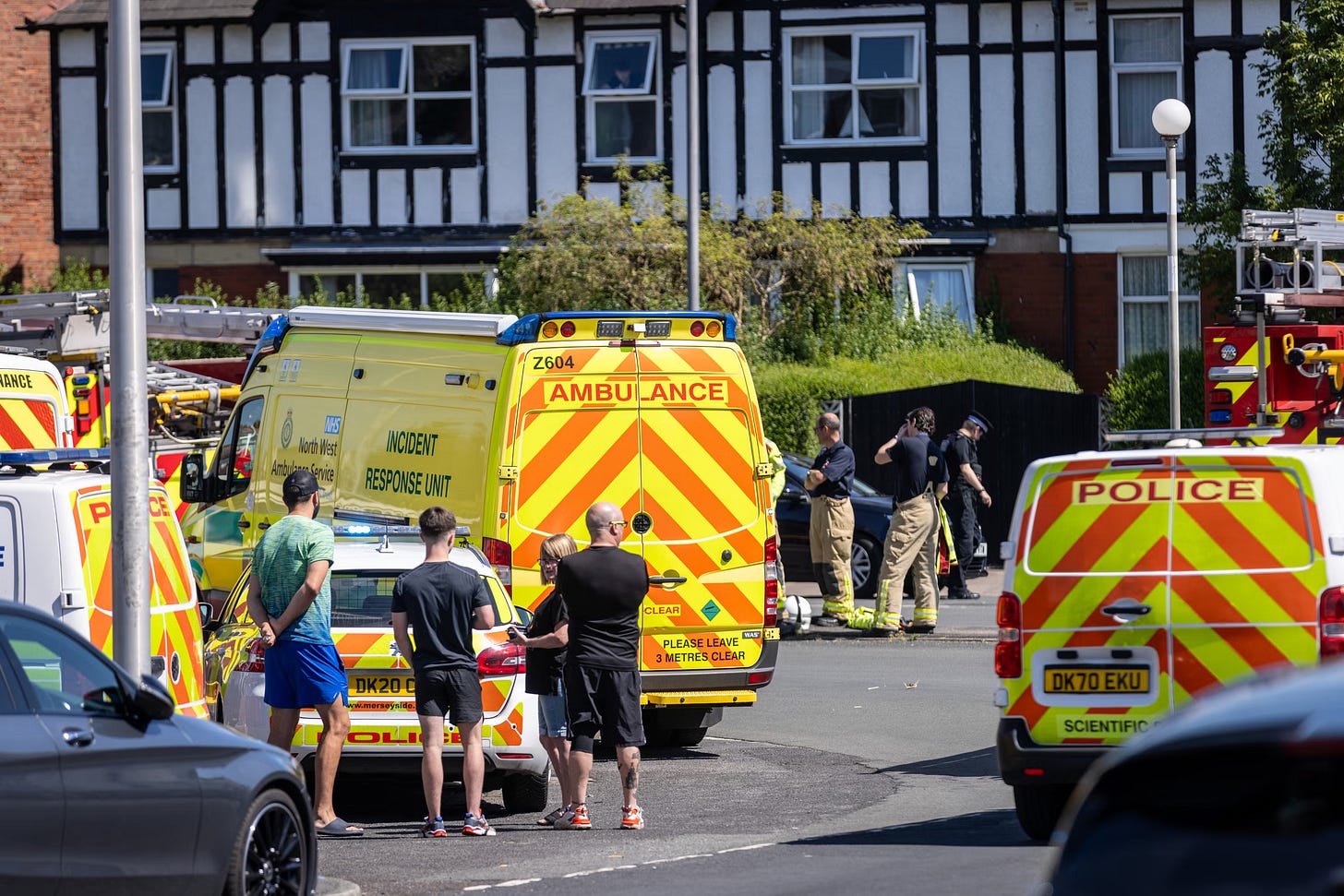
Police have arrived and are running towards the industrial unit. A member of the public tells them: “You need a fucking gun, mate. He’s got a knife.”
Bodycam footage showed officers enter the building and going up the stairs. The white walls that close-in the stairwell are smeared with blood.
The reach the landing, and Rudakubana can be seen standing over the body of Bebe King, clutching the large kitchen knife.
Police tell him to drop the knife. They tackle him to the floor, constraining him, pinning him down as they arrest him for attempted murder.
Joel Verite, one of the window cleaners, had followed the police into the building. As police wrestled with Rudakubana, he picked up Bebe King and carried her out of the building, screaming for help.
Ahead of the kneeling officers there stretches a lake of blood. On the edge of that lake, inside the door of the studio lay Elsie Dot Stancombe. A police sergeant finds her laying on back with what would later be counted as 85 stab wounds to her small body. “It was very obvious she was dead.”
Another police officer find Liddle and the child she had saved locked inside the bathroom. He calls out, “Listen, listen, listen, you’re safe!”
Outside, in the street beyond, girls are barefoot. Some on their hands and knees, with wounds in their backs. Some are laid out across the road and footpath.
More parents are arriving to pick their children up. They are running up the road screaming. Each is looking for their wounded child.
One mother stops as someone calls out to her. The door to one of the houses is open. A woman stands in the doorway. Behind her, several of the girls to whom she has given shelter.
Ambulance crews are arriving — parked haphazardly across the road. In their green summer shirts, they clutch bags of supplies and sprint towards the scene.
One of the girls they attend is Alice Da Silvia Aguiar. She had managed to get out of the building alive but she collapsed beside a vehicle where her heart stopped.
Rescue efforts went on for hours as police began to cordon off the street. The severity of Bebe King’s injuries prevented her from being transported to a hospital. She was treated on the roadside but by 1PM she was pronounced dead. Dozens of girls — including Alice Da Silvia Aguiar — were transported to hospitals across the region but, twelve hours later, Alice had also been robbed of her life.
Rudakubana was driven to the Police station where he was placed in a cell. He was assessed by psychiatrists in the cells who found him fit to be detained and interviewed.
Rudakubana remained silent when he was interviewed but remarked when unsolicited, “I’m so glad those kids are dead.”
Injuries
Over the course of several gruelling hours the prosecution laid bare to the courtroom, the injuries that were suffered by each of Rudakubana’s victims in the 14 minutes that the attack took place. Three girls were murdered. Several others were only rescued from death by the devoted response of the ambulance crews and local hospitals whilst other children were treated for wounds which will impact their health and their confidence for life.
Elsie Stancombe suffered 'at least 85 sharp force injuries'
Elsie Dot Stancombe was pronounced dead at the scene, with the cause of her death cited as multiple stab wounds.
A postmortem examination found that Elsie had suffered “at least 85 sharp force injuries” — stab wounds. “At least.” The proximity of her wounds had been dense enough as to render it difficult to distinguish one wound from another.
The prosecutor went through the many injuries Elsie sustained, including injuries to her arms as she tried to protect herself. “In the opinion of the pathologist, her injuries were untreatable, however quickly help would have arrived.”
She was seven-years old.
Bebe King suffered ‘at least 122 sharp force injuries’
Bebe King was pronounced dead at the scene just after 1pm. She suffered ‘at least 122 shape force injuries’.
She had been found by a member of the public at the top of the stairs, outside the studio door, but forensic evidence suggested she was injured within the studio before she made it out onto the landing. It was then that Rudakubana attacked her again as she lay on the floor.
She was six-years-old.
Alice Da Silva Aguiar died of ‘injuries that were inflicted with severe force’
Alice Da Silvia Aguiar had managed to get out of the building alive despite suffering numerous stab wounds inside the dance studio and suffering a further attack as she fled down the stairs.
By the time paramedics arrived, she had suffered a cardiac arrest. She was taken to hospital where doctors were able to re-establish a pulse but they could not control her bleeding and she had been pronounced dead at 01:20 the following morning.
The post-mortem examination had found a severe head injury which was likely to have caused some bleeding within the brain but the cause of death has been given as “multiple stab wounds.”
She was nine-years old.
It is a miracle any of the children who were attacked that day survived the horrifying ordeal. Each girl that survived a direct attack suffered life-altering injuries.
One survivor had been stabbed 32 times. The little girl who had been seen on CCTV being pulled back into the building by Rudakubana. The prosecution said she was taken to hospital in a life-threatening condition and underwent surgery. She suffered stab wounds to multiple internal organs.
Another survivor had been airlifted to Manchester in a life-threatening condition. She had to have one of her organs removed which will have a life-long effect of her health.
Another survivor required an urgent transfusion due to major blood loss from two stab wounds.
Another survivor suffered eight stab wounds, including a defensive wound to her left forearm.
Another survivor received multiple stab wounds which required immediate hospital treatment to her back and chest. She also suffered two fractures to her back.
Rudakubana also attacked two other young victims, including a girl who having suffered a single stab wound to the back of her chest and another girl who had a gouge to her face and arm which required surgery.
The ages of the victims ranged between 6-13 years-old.
Leanne Lucas, one of the yoga teachers who had shield two of the children with her body had been taken to the Aintree University Hospital in a life threatening condition. She required an urgent transfusion “due to major blood loss”. She was found to have suffered five stab wounds, internal injuries and various fractures from Rudakubana’s attack.
John Hayes, the local businessman who also tried to intervene, needed surgery after suffering stab wounds to his left leg. He required crutches to move after being left immobile at home for a number of weeks. He described feeling lucky that stab wounds he suffered missed arteries.
This is a sanitised account of Rudakubana’s attack and neglects the enduring psychological injuries that are suffered by victims, their families, the other girls who witnessed the attack, the attending emergency crews, and the wider community who knew and loved these children.
This is also to exclude the repercussive fear instilled in families up and down the nation; families who are now forced to choose between constraining their children at home where they can live in relative safety or whether to let into the world to learn and grow but risk the innumerable harms they could suffer in the streets of ‘multicultural’ Britain.
Victim Impact Statements
Over the course of two hours, some of the victims read statements to the court about the impact Rudakubana’s savagery and cowardice has had on their lives. This includes the testimony of two of the girls who had survived being stabbed by Rudakubana.
A selfless 14-year-old survivor reads her statement to the court via video link:
“The beginning of my nightmare started when I saw you. I thought you were playing a joke. I saw you in your green hoody and face mask. The thing I remember most about you is your eyes. You didn’t look human, you looked possessed.
“I watched you stab someone and then I saw you coming for me. It was like slow motion. You stabbed me in the arm and instinctively I turned and that’s when you continued to stab me in the back although I didn’t feel it at the time. All I could hear was the screams.
“I was so scared of what you were doing and I was in a blind panic. I ran out onto the landing and there was a group of girls huddled and I began just screaming for the girls to get down the stairs.
“I remember I was physically pushing them down the stairs to get them out of the building and get away from you. I knew I was running for my life. I needed to try to get everyone out and to safety – that was my first thought.”
Describing the aftermath of the attack, the girl became emotional as she said: “Physically I’ve healed but my scars remain as a reminder of what you did to me, to us all.
“No sane person could do that. It’s sickening what you did, going in there knowing you’re going into a room full of defenceless children.
“Give me a reason for what you did. Arming yourself with a weapon and stabbing children. I hope you spend the rest of your like knowing we think you’re a coward.”
Father “unable to recognise his daughter” because of her injuries speaks out:
“She woke up in the hospital still trying to grab onto her best friend. Still trying to escape him. Still trying to run…She thought Rudakubana was playing a prank and told him she “didn’t want to play” but he attacked her.
“Our daughter has not only experienced the most violent, frenzied attack on her body, but she’s witnessed so much horror too…Her entire childhood has been destroyed by what she experienced and although she survived, she now has to carry that with her for the rest of her life.”
The first child to be attacked recounts how Rudakubana stabbed her
“I first thought that the man who stabbed me was a cleaner and when I saw him and what was happening I thought it was a prank.
“I realised it wasn’t a prank when I saw blood coming out of me. I remember everything being fuzzy and everything that was going through my mind was about my family and friends.
“When I was outside of the building I was thinking what am I going to do as my phone was inside … I had so much blood coming out of me and I was trying to scream, but I was struggling to scream.
“I was thinking, ‘I don’t want to die, I have got to get out of here.”
Heidi Liddle — one of the yoga teachers —“felt completely helpless”
Heidi had locked herself in a bathroom stall with a girl who had fled in their for safety. She had jammed her foot against the door . She recounts hearing the screaming in the hallway beyond and realising the children had not got out.
“I replayed the incident over and over in my mind, changing the sequence of events so that myself and the little girl I was with in the toilet, were stabbed and killed.
“The only time I left the house in the coming weeks was to go and see Leanne and the girls at hospital or to attend the funerals of the three girls, which was heartbreaking.
“I struggled with everyday things, like letting the dogs out, doing any activity that involved me being hunched over, such as hoovering, drying my hair and putting my daughter to bed in her cot, as I envisioned him coming behind me and stabbing me in the back.”
The mother of two girls who survived the attack said the day “changed our lives as a family forever”
“This was meant to be a fun summer event and the girls couldn’t wait to take part…It was a normal day, like any other, it didn’t cross our minds that we should be worried about anything happening to them…It was the worst day of our lives. Both our daughters suffered horrendous injuries at the hands of this one person.”
One of her daughters now has “a complete lack of confidence” and has become “severely self-conscious of her scars”.
“She tries her best to wear her scars with pride, however I have caught her crying about the way she looks and she asks me why this has happened to her,”
They are unable to be left alone for even a matter of minutes…The girls are worried that this man will walk the streets again. This is something they constantly speak about and it petrifies them.…As parents, we feel helpless, we feel guilty.
Leanne Lucas — the injured yoga teacher — also spoke:
“As a 36-year-old woman I cannot give myself compassion or accept praise, as how can I live knowing I survived when children died…You never think this is going to happen to you, I never thought this was going to happen to me and now my mindset has been altered to it could happen to you and it will probably happen to you. I feel that I have lost the ability to accept people now as they are.
“For Alice, Elsie, Bebe and the surviving girls, I’m surviving for you.”
A father read out the statement of a heroic nine-year old victim:
“It has been very hard to deal with what happened to me at Hart Space. I struggle with my emotions and I have scars that I know will be with me forever, but I want to look forward.
“When people in school asked me ‘Do you wish you weren’t there that day?’ I said that, in some ways, I wish I wasn’t, but also, if I wasn’t there, someone else would have been stabbed and they could have died, so I’m glad I might have stopped someone else getting hurt’.”
Her father told the court: “Our daughter is strong…Our daughter loves and is loved. Our daughter sees the best in everyone…Our daughter is everything that Axel Rudakabana is not."
Elsie’s mother “refuses to give Rudakubana the satisfaction” of hearing of Elsie’s life and pain:
“We are not going to stand here and list everything you have taken away from us, because we refuse to give you the satisfaction of hearing it…We will not let you know anything about her [Elsie] because you don’t deserve to know the extraordinary person she was.
“You know what you have done and we hope the weight of that knowledge haunts you every day…This was not an act of impulse, it was premeditated. You chose that place, that time and those circumstances, knowing that when we arrived all we would see was the aftermath of the devastation caused.
“We were robbed of the opportunity to protect our girls. If we had been there, this would never have happened…Though you have stolen our daughter from us, you will not take away our determination to honour her memory, we will carry her love, positivity and her legacy forward, no matter how much pain you have caused."
Alice's parents describe how their “souls have been shattered”
“We were so lucky and privileged to have her…Every day felt like a gift.
“Alice was a beautiful girl, perfect in every way – she loved her school, her friends, music, dance, colourful pens and friendship bracelets…Alice woke up on the day she died excited about the dance workshop and a "perfect plan for a perfect day" playing at a friend’s in the pool later.“In a matter of minutes our worlds were shattered and turned upside down by the devastating attack on our Alice…A pin drop that changed our lives forever…We kept our hopes up every second during Alice’s 14-hour fight. But, once she had lost her fight, we lost our lives…Our life went with her. He took us too. Six months of continuous pain and a lifetime sentence. That’s what we got then and the life we live now.
“Our dream girl has been taken away in such a horrible, undeserving way that it shattered our souls.”
Rudakubana abused his power” says parents of another injured girl
“This has always been about power and control. This person has abused his power as an adult in the most extreme of ways – to exert planned, sustained and unimaginable horror over the most powerless in our society, our children.
“He will not win, though. He will not gain the notoriety he so desperately craves. He will not be remembered…When we think of Southport, we will think of the girls. Their bravery. Their strength.”
Each of the Victim Impact Statement can be read in full in the sentencing report, and I will post each statement on this Substack in due course.
Members of the public are able to support the victims and families of the Southport attack by donating to the official ‘Southport Stronger Together Appeal’
”I’m glad they’re dead”
Rudakubana had been arrested on the scene, standing over one of the victims with the murder-weapon. He had been wrestled to the floor where he is reported to have ‘whined like a little girl’ as attending officers restrained him.
The prosecutor said Rudakubana made no reply to the caution when he was arrested, first, on suspicion of attempted murder, then, soon after, on suspicion of murder.
He was assessed by psychiatrists in the police cells who found him fit to be detained and interviewed but Rudakubana remained silent when he was interviewed.
When he was held in police custody, the killer made number of “unsolicited comments” which were recorded on CCTV footage or noted down at the time.
One of them included Rudakubana saying “I’m so glad those kids are dead, it makes me happy”.
“I don’t care, I’m feeling neutral.” He’s said after murdering Elsie, Bebe, and Alice. But he was almost gleeful. “Literally, such a good thing those kids are dead.”
He is reported to have asked, “How old was the youngest?” in relation to the children he’d injured and killed. The answer was 6 year-old Bebe.
“I’m so glad the children are dead, so glad,” he said. “So happy, six-years-old. It’s a good thing they are dead, yeah.”
No defence
Ahead of the trial, it transpires that Axel Rudakubana’s defence counsel were not going to offer a defence for Rudakubana’s crimes but leave it to the prosecution to prove his guilt.
Rudakubana’s autism spectrum diagnosis had been raised as a point of order in the reading of the first charges and gave an initial indication as to the direction the case would be taken.
To emphasise the impressionability of young men is a defence strategy Stan Reiz KC has routinely employed in the past with clients either being acquitted or having their charges of murder reduced to manslaughter.
The inclusion of Carmel Wilde among the defence counsel indicated that an emphasis would be placed upon Axel Rudakubana youth and character. Wilde has been known to argue diminish culpability as a result of a client’s upbringing or impressionability.
The defence counsel ordered an extensive range of cognitive tests and mental health assessments in the hope (rather than expectation) that Rudakubana might be deemed irresponsible for his actions and unfit to stand trial.
Whilst a high profile case, the murder of children by young violent men is one of the crimes upon which Reiz has built his legal reputation, and yet, come the sentencing hearing, Stan Reiz KC took to the stand and confessed, “For offences of such wickedness, the mitigation...is limited'
Reiz is obliged to say evidence for mitigation is ‘limited’ even when nothing could atone for his client’s actions. Anyone accused of committing a crime in the United Kingdom, however strong the evidence against them, has a right to a defence counsel. Whatever the barrister’s own personal judgement or feelings in the matter, it is his job to prove his client did not commit the crime of which he is accused, and, if the client has already confessed — as Rudakubana did, come the end — the defence counsel must prove that his client is either contrite or irresponsible for his actions.
Rudakubana has never been contrite. He remains pleased with himself.
Reiz also had to concede that, “There is no psychiatric evidence before the court that could suggest that a mental disorder contributed to the defendant’s actions.”
His one line of mitigation, in the end, had been that Rudakubana had made “a transition from a normal, well-disciplined child to someone who was capable of committing acts of such shocking and senseless violence.”
No evidence had been offered as to what caused this ‘transition’ and it remains a mystery upon which the public and the Press have been left to speculate, and the UK government wish to leverage to impose further constraints upon online discourse, internet-based shopping, and freedom of speech in the UK.
Sentencing
Around 4.30PM, eighteen-year old Axel Rudakubana was sentenced to 52 years in jail after receiving 13 life sentences.
Delivering the sentencing in Rudakubana's absence, Mr Justice Goose said it was unlikely Rudakubana would ever be released from prison. For the murders of Bebe, Alice and Elsie, the judge announced, “the sentence must be custody for life.”
The judge pronounced the attack on the Taylor-Swift themed dance class "a mass killing":
“He saw the publicity for a children’s party and decided to kill as many as he could, targeting young children…In time, he was highly likely to use the ricin he had produced…It is equivalent in seriousness to terrorist murders…What he did has caused such shock and revulsion to the whole nation that it must be viewed as the extreme level of crime.”
He continues:
"He wanted to try and carry out mass murder of innocent happy and young girls…I believe he would have killed all 26 children if he could, and any adult who got in his way.”
Mr Justice Goose then concluded by stating, "The minimum term before parole is 27 years.”
Rudakubana can be issued with a life-sentence in name but not in practise. Youth offenders — Rudakubana had been 17-years-old at the time he carried out his attack — cannot be issued with full-life sentences which necessitates the issuing of a time frame in which the offender can expect to apply for parole.
This law is compassionate and judicious when dealing with delinquent teenagers who deal drugs, steal, or carry weapons — young people who, in more favourable educational circumstances and a stable home, might not have committed these crimes. Such young people often come to regret their earlier choices when given the support they lacked and have role models to whom they can aspire. In cases like Axel Rudakubana, however, a teen on the cusp of manhood who acted with meticulous rationality, pride, and force, a law that demand forgiveness can only be interpreted as weak and foolish.
There had once been legislation in the UK — Criminal Justice Act 2003 — which empowered judges to issue a “whole-life order” (WLO) in extreme offences committed by young people. This decision had be revoked in a Court of Appeal ruling in 2019 because imposing a WLO on offenders under the age of 21 was considered incompatible the treaties of the European Court of Human Rights (ECtHR).
Axel Rudakubana’s heinous and sadistic mass murder in Southport has not only reinitiated debate over whether offenders under-21 should be subject to whole life orders, but whether the death penalty should be re-introduced in the United Kingdom for extraordinary crimes of depravity and cruelty.
The re-introduction of the death penalty would signal a zero-tolerance approach for offences against the morals of the nation, and would spare the victims and their families the indignity of having their tax money used to feed, house and entertain the sadists who would hurt them, their children, and their community.
Mr Justice Goose did, however, reassure the public that, “it is likely he [Rudakubana'] will never be released” and should he qualify for parole, he will “remain on licence [under supervision] for the rest of his life."
What happened that day in Southport cannot be summed up in the six hours it took for Rudakubana to be sentenced. Each of these girls will be impacted — body, mind and soul — for the rest of their lives by what was done to them in that fateful fifteen minutes. Nothing will restore Alice or Bebe or Elsie to their families. A community of children have been robbed of their confidence, their beloved classmates, and their peace of mind.
Taylor Swift songs will no longer inspire these children to be courageous, bold, and creative — they will hear these songs on the radio and they will become paralysed with fear. They may forever shrink, and look over their shoulder, when walking along a street or entering confined space, not only because one man decided to abuse their innocence for his own pleasure, but because a whole network of government failed to protect them from a beast they knew lived among them.
I will to continue to cover this story to the very end.
It is not for the Press or the politicians to decide when this ordeal is over — it is for the public to decide. For the families, it will never be over. As long as the they have questions which remain unanswered, this must go on. Until action is taken on policing, on terrorism, on immigration, as the public demands, the memories and experiences of these heroic little girls must be carried by all of us. There peace is our peace, and as long as they are frightened, we have a job to do.

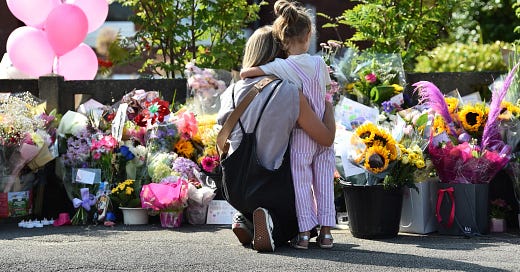



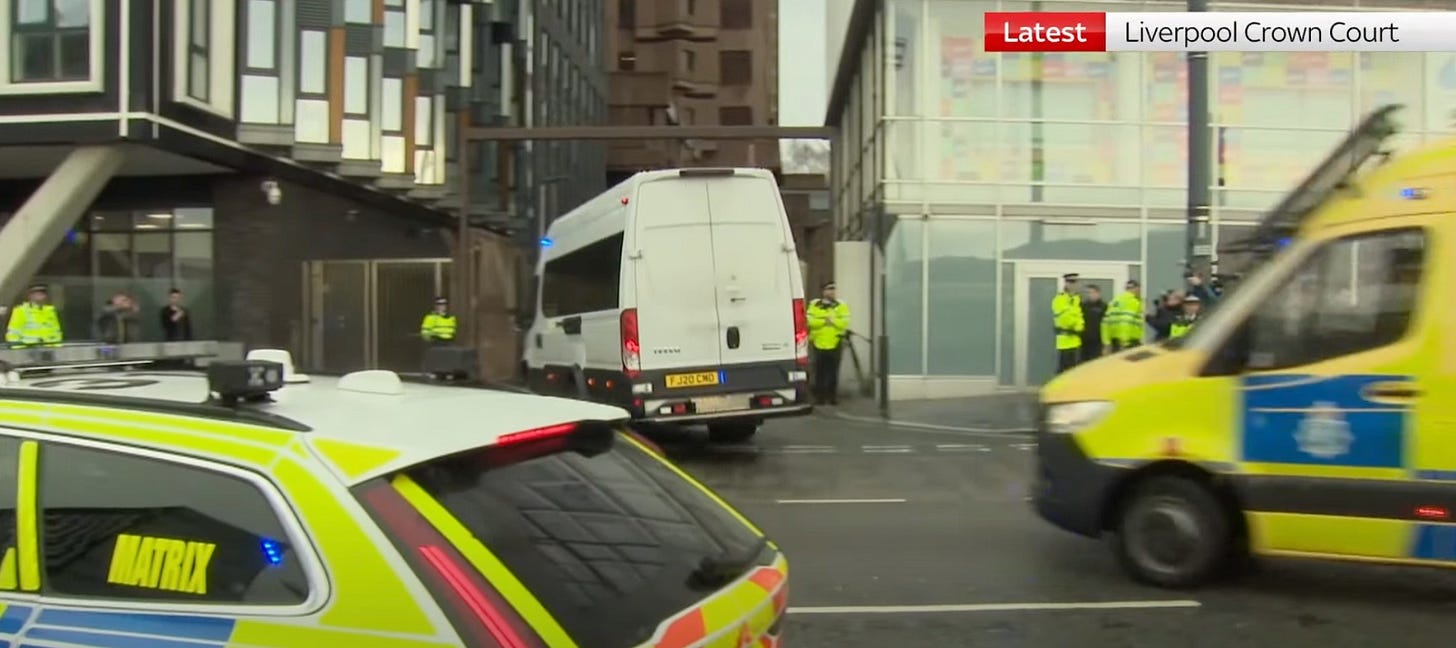
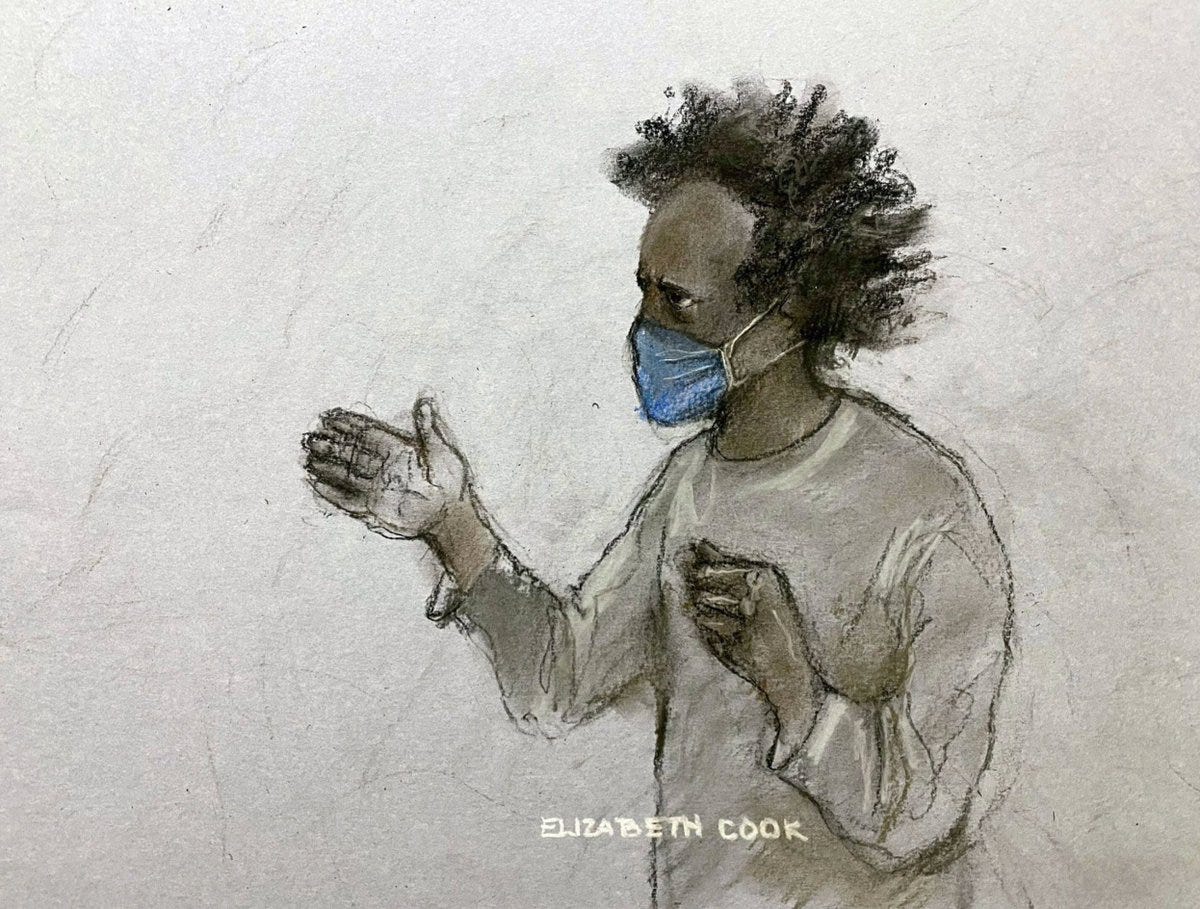

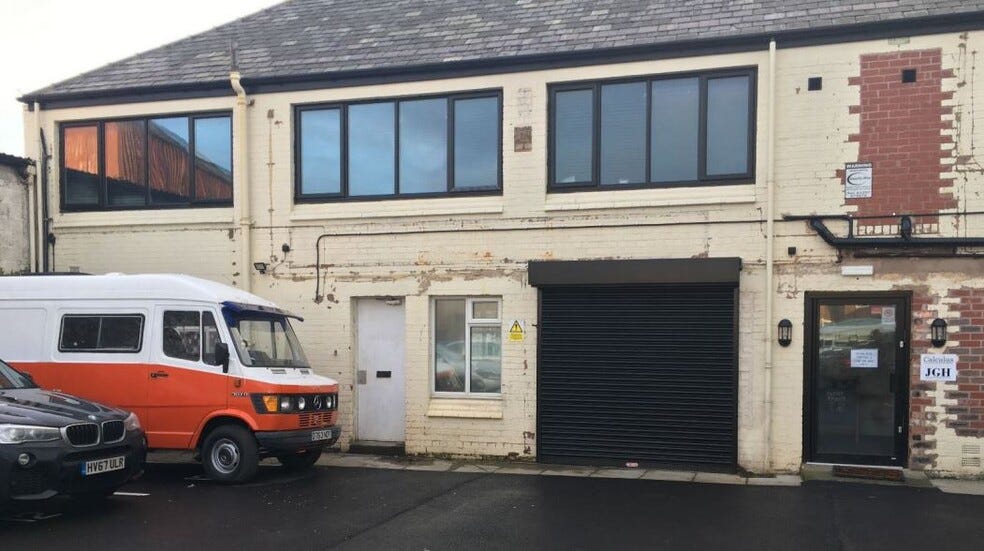



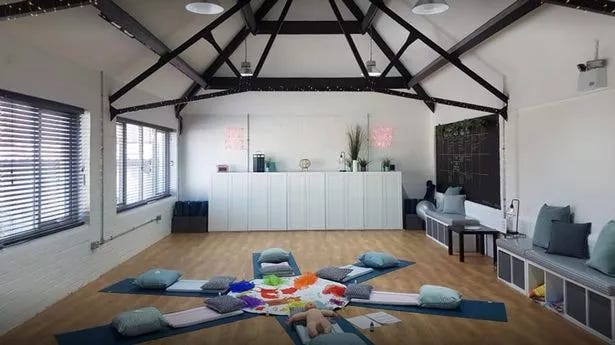
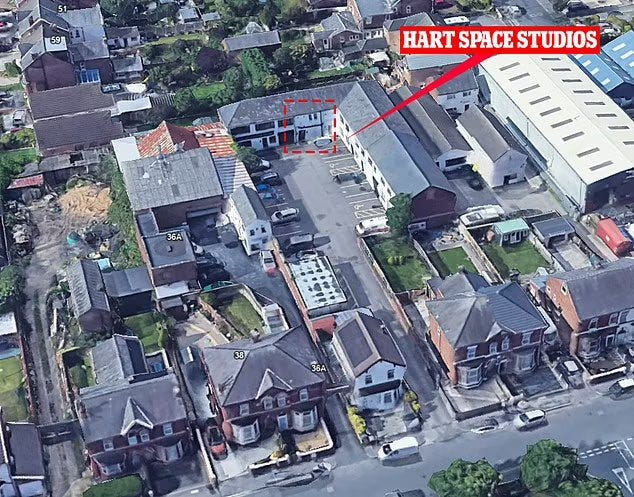




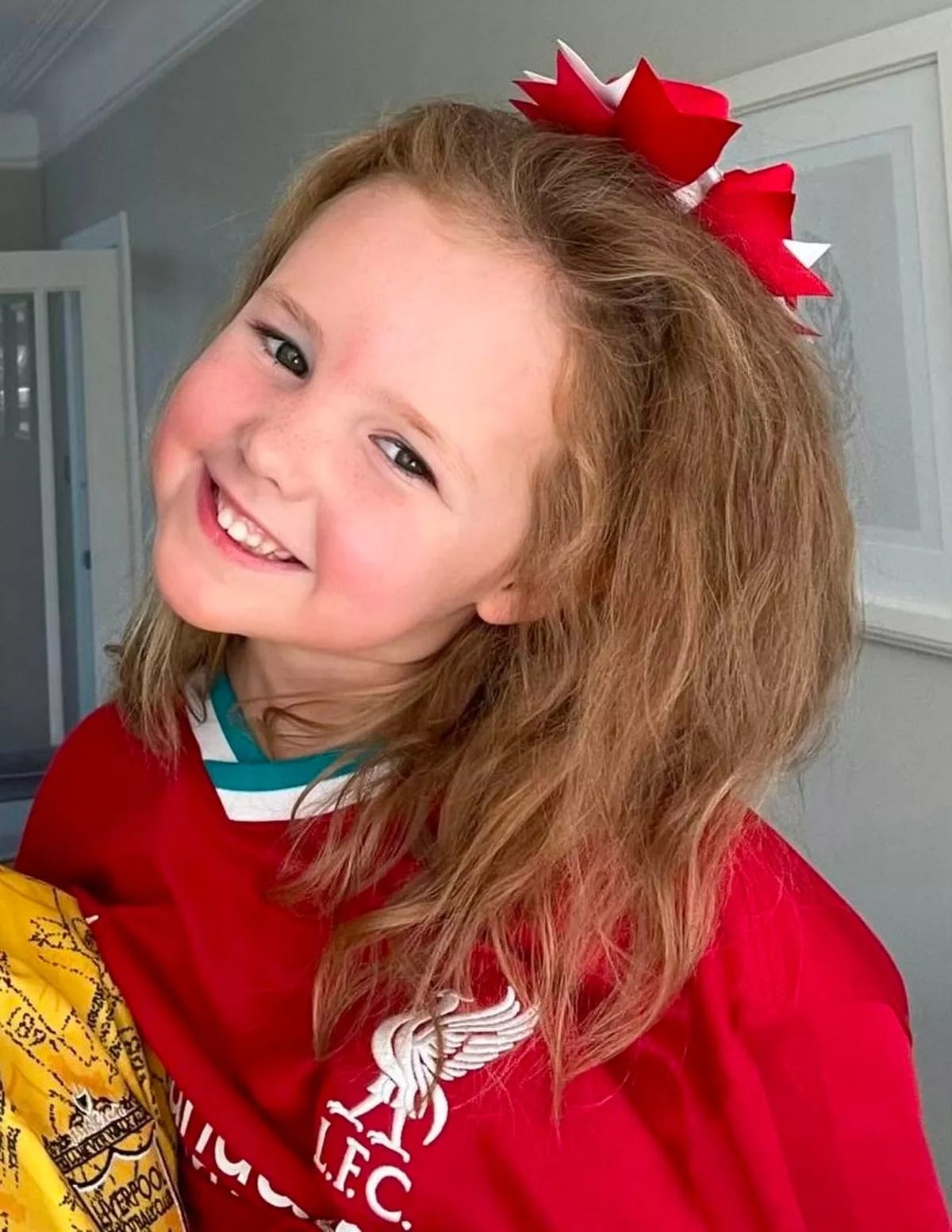



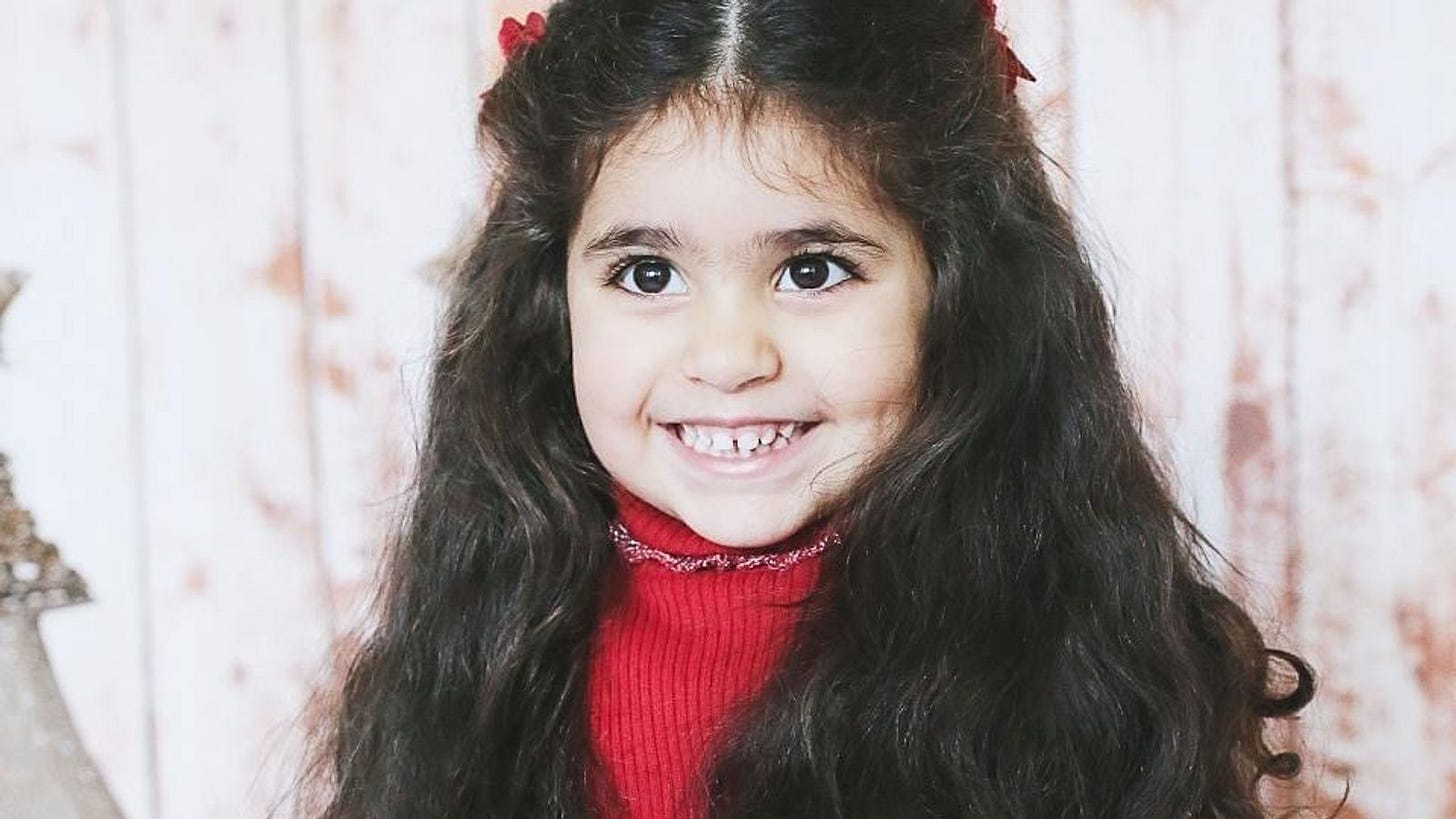

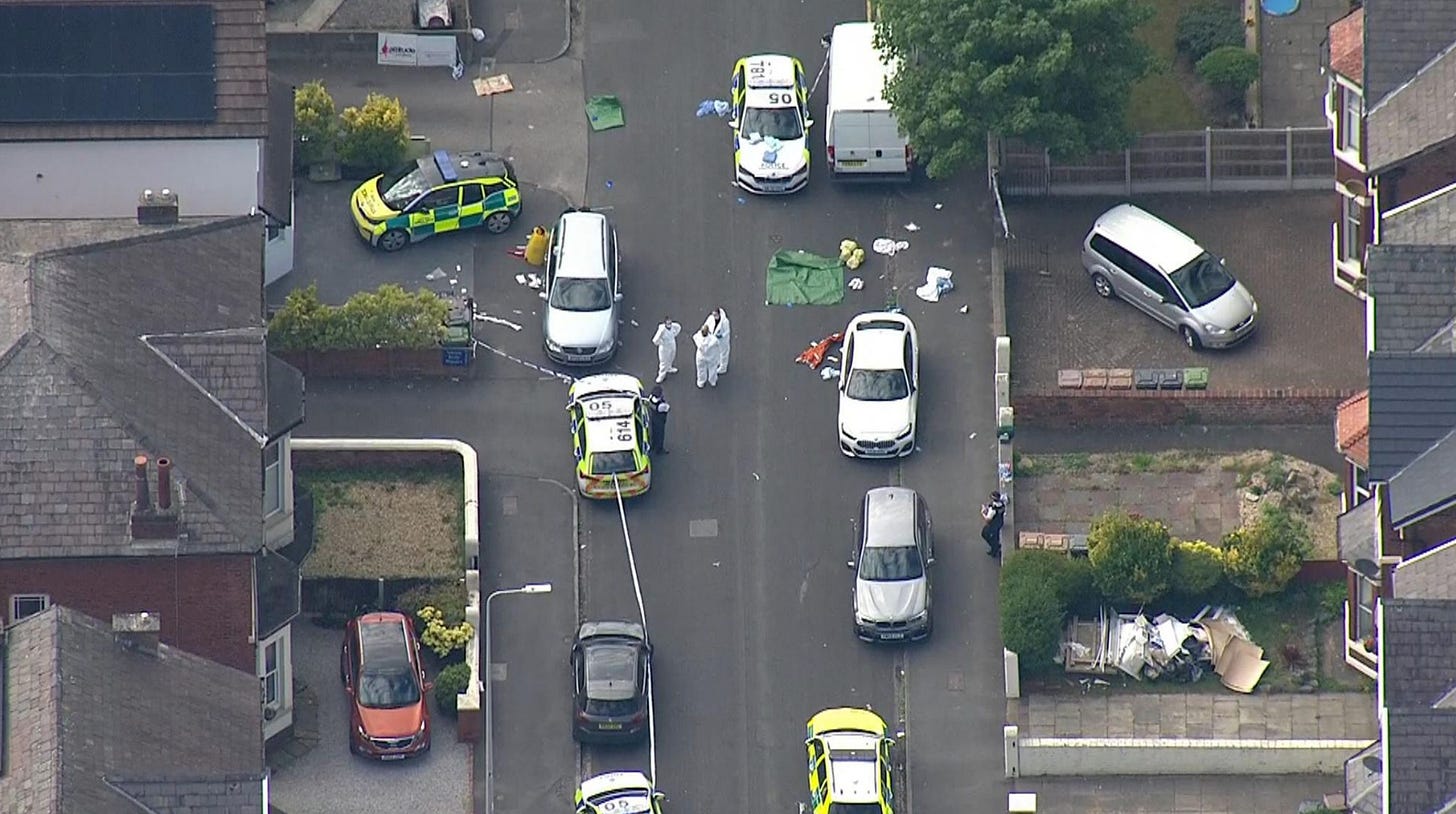









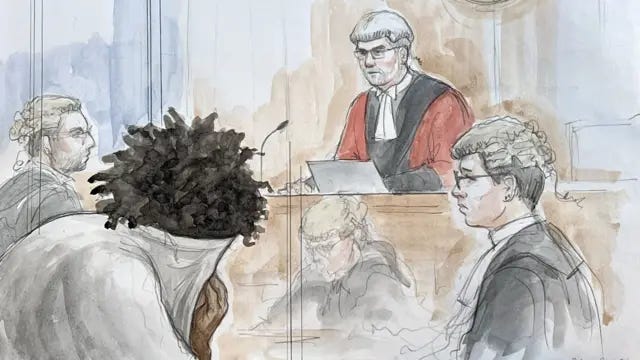






The account hacking seems very suspicious...
Excellent article. I posted to X and called on Peter Hitchens to help with your situation - X could help if they were shamed into it. My account is very suppressed but hopefully a few see it anyway.
https://x.com/TheWestVsWallSt/status/1887983052846166328?t=ayS7xc1p8pCACDOOL6QFCA&s=19